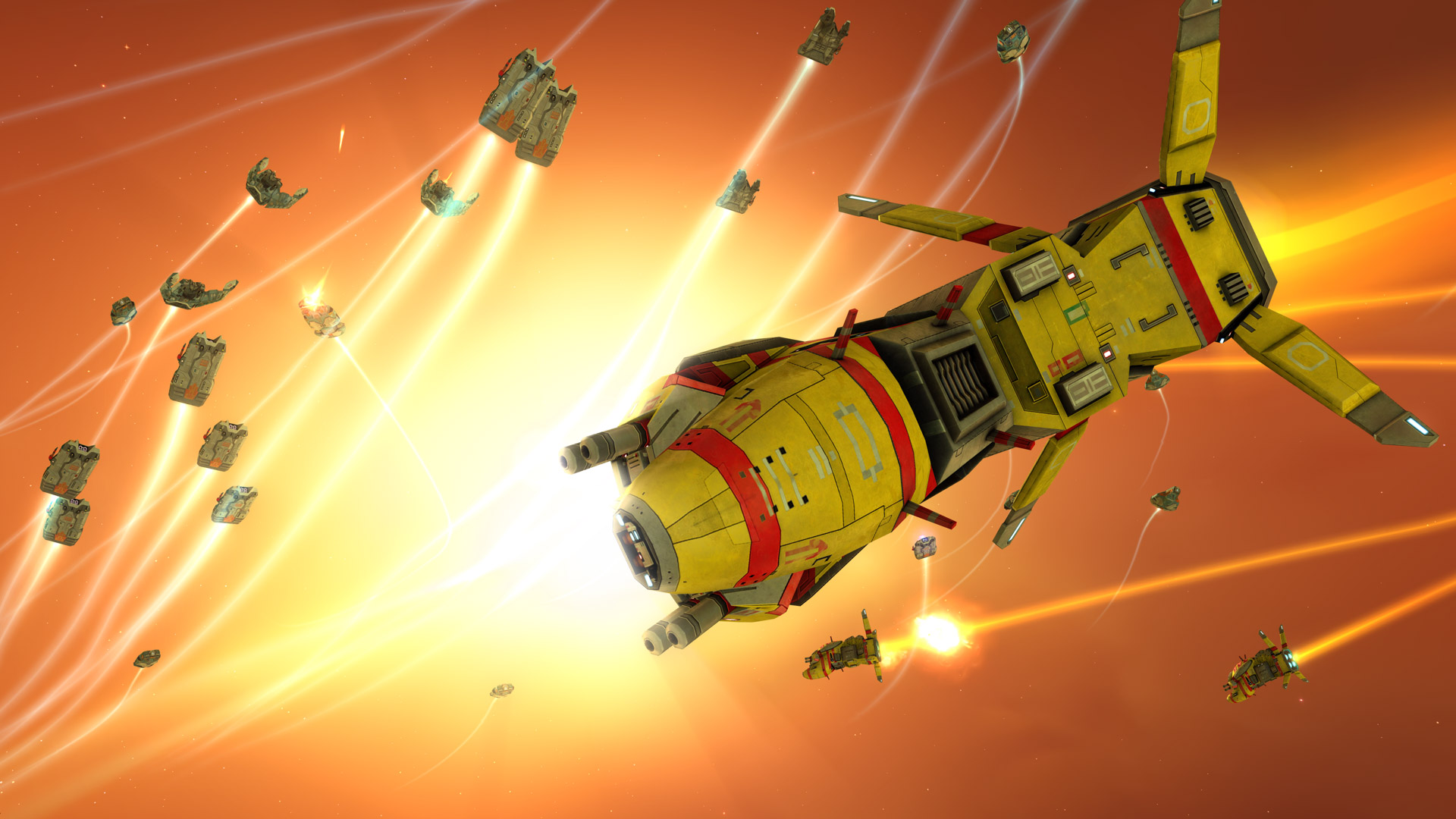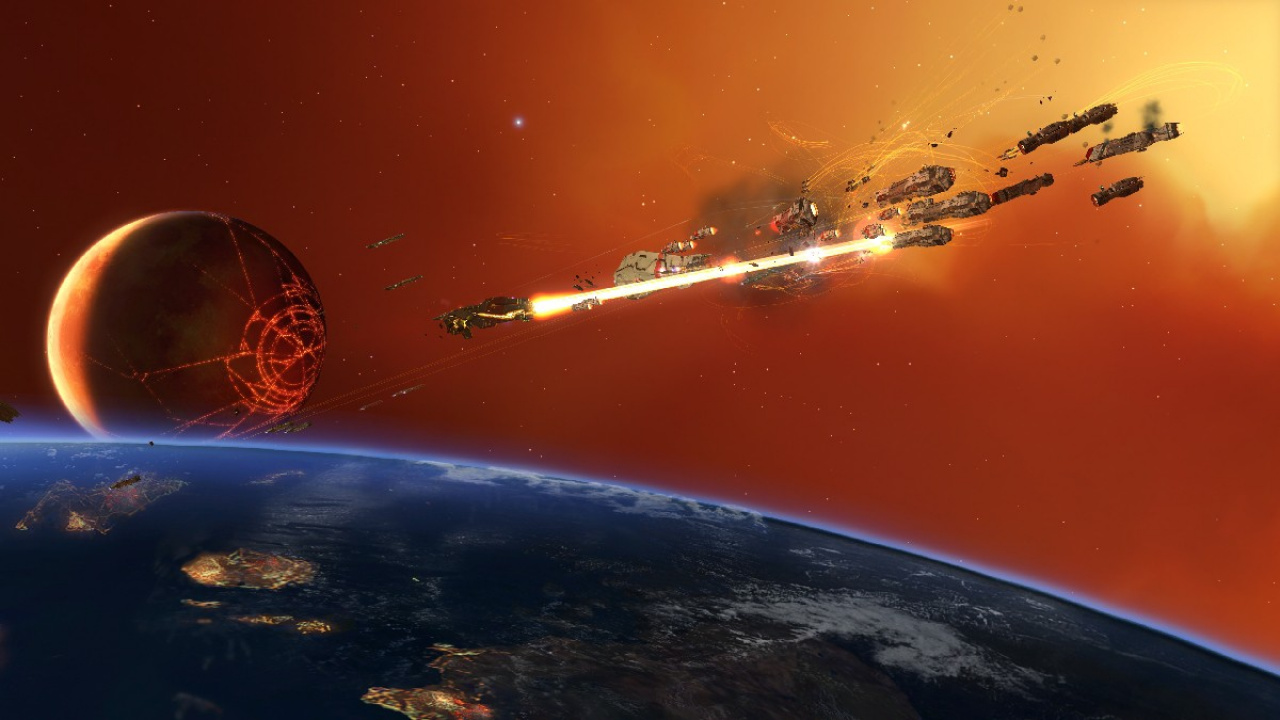
Unlike most RTS titles, in which the player is given a fresh base in most missions, the Kushan mothership mostly stays the same from the end of one mission to the beginning of the next. The only real issues with the campaign are the continuity and the controls (to be discussed in the video section). In 'Homeworld 2' the Kushan story continues as a powerful warlord looking to make a name for himself comes into direct conflict with the upstarts. Left with only their advanced mothership and less than a million people, the plot of 'Homeworld' has them searching for Hiigara, a mythical planet they believe to be their ancestral home. Their world is soon destroyed by a race of people offended that they have developed hyperspace technology, as the Kushan apparently signed a treaty four thousand years ago that specifically forbade such technology. The Kushan have lived on a searing desert world for millennia and have recently discovered a shipwreck with advanced technology, allowing them to leave their planet and solar system. The storyline of both games follows the Kushan people, seemingly in a different galaxy, or at least a different time period, as no mention of Earth is made. Each battlefield is expansive, bringing flanking and surprise attacks into play (especially with the cloaking fields in later levels). The player has time to take control of a losing engagement and either withdraw or change tactics to push back. Fights are long, but rather than drag on in tedium, they provide the player with meaningful avenues for strategy. Research is ponderous, especially at the capital level. Resource ships take a long while to get into position and fill their holds, after which they begin the sluggish process of returning to their resource controller, docking, and unloading. 'Homeworld' is a slower RTS experience than most of its contemporary siblings.

During all of this, a small flotilla of logistics ships works back at the base, harvesting resources and developing new techs. Support vessels can accompany the fleet to repair ships on the fly or offer bonuses. Capital vessels are slow and cumbersome, but once in position can bring withering fire down on enemies. The small vessels careen around wildly, focusing on small enemies and screening for the larger ships. The player can have a fleet of over 100 vessels, allowing for massive dogfights.ĭuring battle, ships typically behave as they would be expected to, depending on their size and role. Eventually corvette, frigate, and capital ship options become available. At the lower tiers are small strike ships and fighters - interceptors, bombers and the like. By researching new tech, I gained access to increasingly powerful (and expensive) spacecraft. These resources come in the form of asteroids that are harvested by mining vessels. The player has a pool of resources that must be replenished in order to continue building ships and researching new technologies. The combatants are spaceships or gun platforms, and have tactics not generally seen typical RTS units, such as the ability to fly in formations.ĭespite these differences, the games still follow many RTS conventions. It is a science fiction game set in deep space, and so all battlefields are three-dimensional. all you need are fighters to stop other fighters/bombers and the largest capital ships to blast everything else.'Homeworld' is real-time strategy (RTS), but markedly different from most titles in that genre. its junk, they will die too fast to make any difference and you have tied up your production on ships which wont last long.


Some might say blah blah, bombers, blah frigates blah blah. and the key is keep producing them, do not stop. destroys are ok, but i would say only build a few at start until you have researched the big guns. you will also need large amounts of fighters or anti-fighter corvettes to protect your capital ships. they are the most cost/time effective ships that last the longest and do the most damage. you will need to start producing battlecruisers or heavy cruisers a.s.a.p. you will get enough credits from bountys and missions you will only need the credits for early game to get you going.įirst of all the most important thing is production time.
#Homeworld remastered collection online multiplayer how to
and FYI if you watched TotalBiscuit a few days ago playing thats an example of what NOT to do.Ĭhanges made to the multiplayer with bountys and relics that generate credits have slightly altered how to play. Ok folks, so here is some advice for multiplayer tactics.


 0 kommentar(er)
0 kommentar(er)
